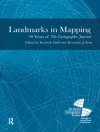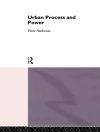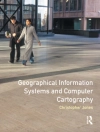This book investigates why and how cycle and walking paths can help to promote the regeneration of marginalized areas facing depopulation and economic decline. In addition, it offers a broad overview of recent scientific research into slow tourism and marginality/spatial inequality and explores the linkages between these topics. Key issues are addressed by experts from various disciplinary backgrounds, and potential measures are proposed for the integration of slow tourism into strategies for regional development. Particular attention is devoted to the VENTO project, which involves the creation of a 700-km-long cycle route from Venice to Turin that passes through various rural and marginalized areas of northern Italy. The goal, research process, design, and early lessons from this important project are all discussed in detail. Moreover, the book describes policies and strategies that have successfully been used to enhance the slow tourism infrastructure in other European countries.Given its scope, the book will appeal to researchers, professionals, and students interested in e.g. policymaking, tourism planning, regional development, and landscape and urban planning.
Spis treści
From Slow Tourism to Slow Travel: An Idea for Marginal Regions.- The Seat and the Saddle. How Slow is Quick and Fast is Stuck.- Marginality from Theory to Practices.- Marginalised Areas as a Public Policy Concern.- Italian Policies on Marginal Territories: An Overview.- Slowness to Discover the Ordinary Italian Landscape.- Food on the Bike.- The Role of Historic Roads to Preserve and Valorize the Landscape.- Cultural Heritage Preservation and Territorial Attractiveness: A Spatial Multidimensional Evaluation Approach.- Slow Travel Project for Enhancing Territories: Motivations and Directions.- Design, Public Engagement and Communication: Reframing Methodology.- Narration of Cultural Heritage as Anti-fragility Tool.- Learning from the Experience: A Set of European Policies.- The United Kingdom’s National Cycle Network: Paths for Everyone, Past, Present and Future.- The Singularity of the Camino de Santiago as a Contemporary Tourism Case.- The Success of the Cycle Tourist Backbone Along the Danube in Germany and Austria.
O autorze
Paolo Pileri is a Full Professor of Urban Planning at the Department of Architecture and Urban Studies, Politecnico di Milano, Milan, Italy. His research interests have consistently brought together environmental issues with urban and landscape planning, and many of his research efforts have involved projects focusing on sustainable mobility as a way to better link people and landscapes. In this context, he has been working on the VENTO project to connect “forgotten” but nonetheless stunning Italian landscapes along the Po River by means of an extensive cycle path. This is not merely about the path itself, but also the ability of a territory and landscape project to generate a new, green/local economy and new high-quality jobs. Professor Pileri is the author or editor of numerous publications, ranging from books and journal articles to popular works.
Rossella Moscarelli is currently engaged in a Ph.D. project titled “Inner areas and slow lines: an opportunity to regeneratemarginalized territories in Italy” at the Department of Architecture and Urban Studies, Politecnico di Milano. Holding an M.Sc. (cum laude) in Environmental and Technological Architecture, she is an active collaborator in the VENTO research group and has also studied public policies relating to, and the impacts of, the Camino de Santiago in Spain. She is the author of numerous publications on slow tourism infrastructure, land consumption, and regeneration.












